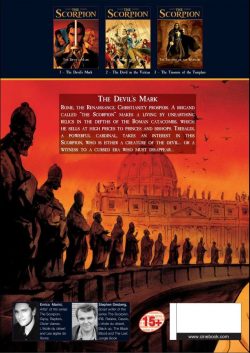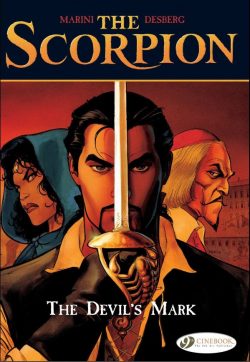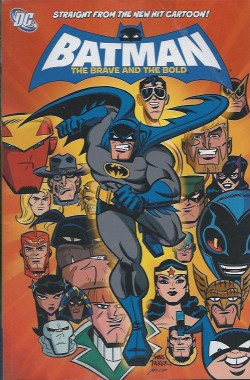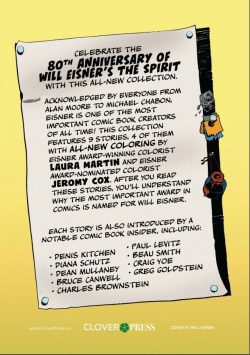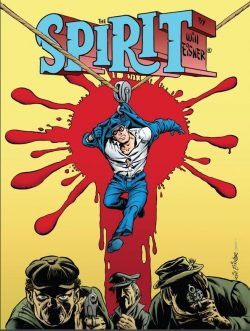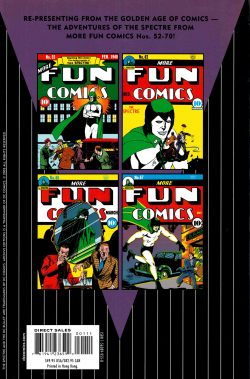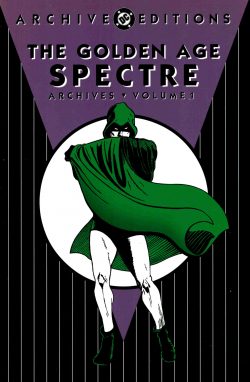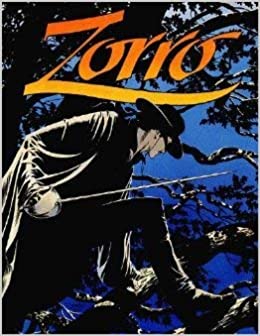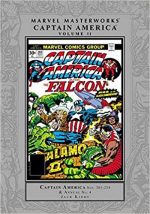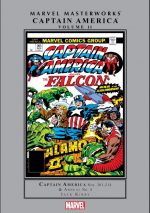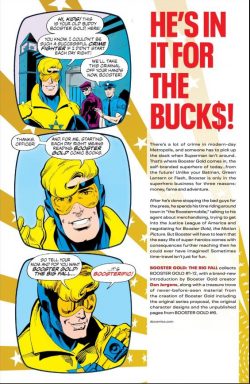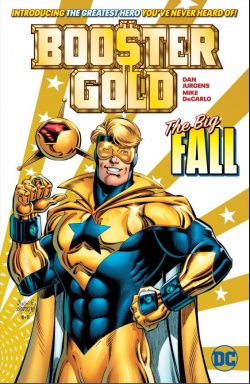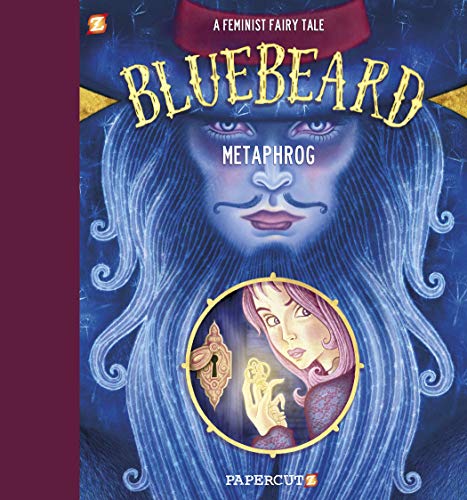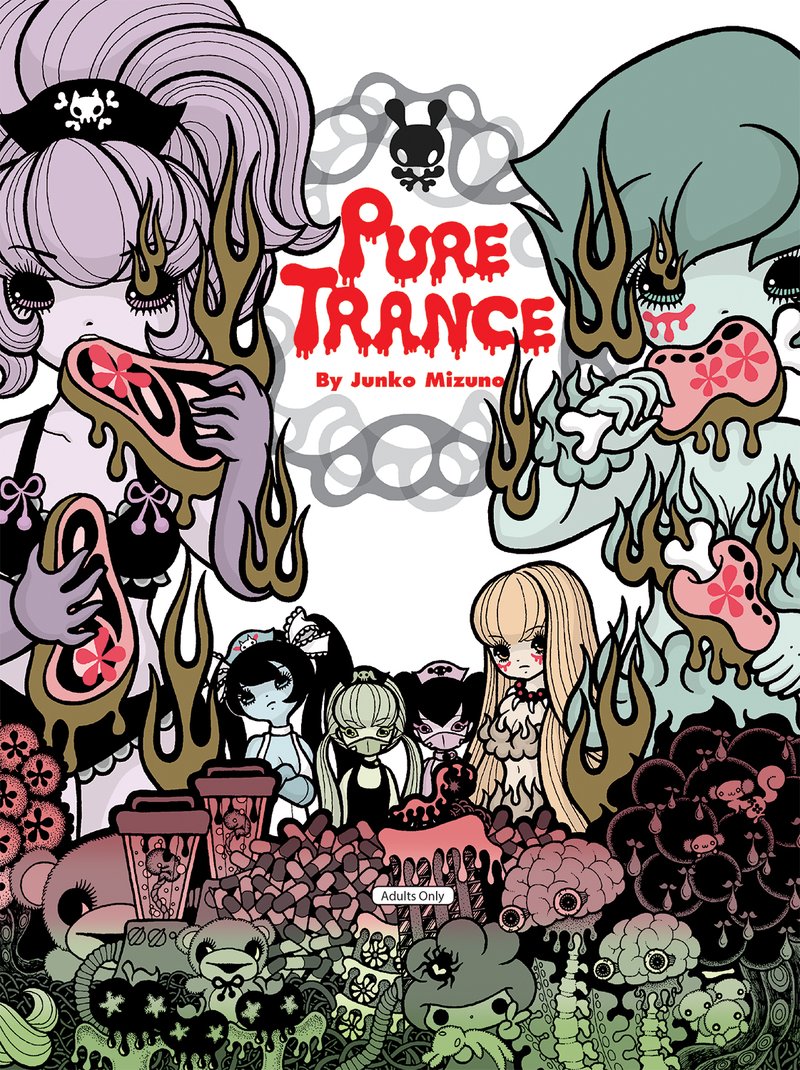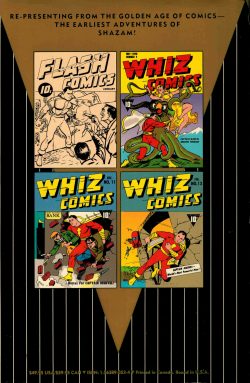
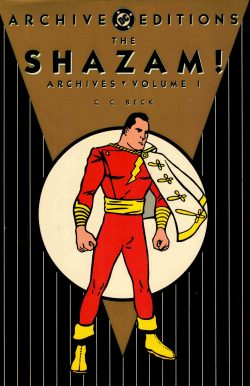
By Bill Parker, C. C. Beck & Pete Costanza (DC Comics)
ISBN: 978-1-56389-053-6 (HB)
At their most impressive, superhero comics combine the gravitas of mythology with all the sheer fun and exuberance of a child’s first rollercoaster ride. A perfect example of this is the original happy-go-lucky hero we can’t call Captain Marvel anymore.
First seen in the February 1940 issue of Whiz Comics (#2 – there was no #1) and cashing in on the comicbook sales phenomenon of Superman, the big red riot eventually won his name after narrowly missing being Captain Flash or Captain Thunder. He was the brainchild of Bill Parker and Charles Clarence Beck.
Originally dispensing the same sort of summary rough justice as his contemporaries, the character soon distanced himself from the pack – Man of Steel included – by employing and enjoying an increasingly light, surreal and comedic touch, which made him the best-selling comics character in America.
Ultimately, he proved that he could beat everybody but copyright lawyers; during his years of enforced inactivity the trademarked name passed to a number of other publishers before settling at Marvel Comics and they are never, never, never letting go. You can check out and compare their cinematic blockbuster version with the DC Extended Universe’s Shazam! flick too…
Publishing house Fawcett had first gained prominence through an immensely well-received magazine for WWI veterans entitled Captain Billy’s Whiz-Bang, before branching out into books and general interest magazines. Their most successful publication – at least until the Good Captain hit his stride – was the ubiquitous boy’s building bible Mechanix Illustrated and, as the comicbook decade unfolded, the scientific and engineering discipline and “can-do†demeanour underpinning MI suffused and informed both art and plots of the Marvel Family titles.
As previously stated, the big guy was created by writer/editor Bill Parker and brilliant young artist Charles Clarence Beck who, with his assistant Pete Costanza, handled most of the art on the series throughout its stellar run. Other writers included William Woolfolk, Rod Reed, Ed “France†Herron, Joe Simon, Joe Millard, Manley Wade Wellman and the wonderfully prolific Otto Binder.
Before eventually evolving his own affable personality, the Captain was a serious, bluff and rather characterless powerhouse, whilst his juvenile alter ego was the true star: a Horatio Alger archetype of impoverished, boldly self-reliant and resourceful youth overcoming impossible odds through gumption, grit and sheer determination…
Homeless orphan and good kid Billy Batson is selected by an ancient wizard to be given the powers of six gods and heroes to battle injustice. He transforms from scrawny precocious kid to brawny (adult) hero Captain Marvel by speaking aloud the wizard’s name – an acronym for six legendary divine patrons: Solomon, Hercules, Atlas, Zeus, Achilles and Mercury.
This magnificent full-colour, deluxe hardback compendium re-presents the first 15 exploits from Whiz Comics #2 to 15 (February 1940 to March 1941). There was no #1, two issue #5’s and two editions in March, but I’ll try to explain all that as we go along) to cash in on the sales phenomenon of Superman and his many imitators and descendants.
Author, journalist and fan Richard A. Lupoff covers in great detail the torturous beginnings of the feature in his Foreword before the magic proper starts with a rare and priceless glimpse at the hero’s nigh-cursed design stage. This shamefully out-of-print tome also contains biographical details on all the creators.
To establish copyright, publishers used to legally register truncated black and white facsimile editions called “Ash-can Editions†in advance of their launch issues. For Fawcett, the production of their first comicbook proved an aggravating process since this registration twice uncovered costly snags which forced the editors to redesign both character and publication.
Contained herein are cover reproductions of Flash Comics #1 starring Captain Thunder (obliviously scheduled for release mere days after DC’s own Flash Comics title hit the stands), and Thrill Comics #1 which repeated the accident just as Standard’s Thrilling Comics launched. Also on view is the uncoloured art for the first half of the story of “Captain Thunder†which would eventually be re-lettered and released as the lead in anthology title Whiz Comics #2, finally safely released cover-dated February 1940.
Like many Golden Age series, the stories collected here never had individual titles and DC’s compilers have cleverly elected to use the original comics’ strap-lines or cover blurbs to differentiate the tales…
‘Gangway for Captain Marvel!’ – drawn in style reminiscent of early Hergé – sees homeless orphan newsboy Billy Batson lured into an abandoned subway tunnel to a meeting with infinitely ancient wizard Shazam. At the end of a long life confronting evil, the white-bearded figure grants the lad the powers and signature gifts of six gods and heroes; bidding him to continue the good fight.
In 13 delightfully clean and simple pages Billy gets his powers, has his secret origin revealed (he’s heir to a fortune embezzled by his crooked uncle Ebenezer), wins a job as a roaming radio reporter for Amalgamated Broadcasting and defeats the demonic schemes of Doctor Thaddeus Bodog Sivana, who is holding the airwaves of America hostage. The mighty, taciturn and not yet invulnerable Marvel is only sparingly used to do the heavy lifting. It is sheer comicbook poetry…
The March issue had no cover number but was listed as #3 in the indicia. It featured ‘The Return of Sivana’ as the insane inventor unleashes a mercenary army equipped with his super-weapons upon the nation, attempting to become Emperor of America. His plan is duly thwarted by Billy acting as a war correspondent, and the mighty muscles of Marvel…
The third (April) Whiz Comics had “Number 3†on the cover but #4 inside and proudly proclaimed ‘Make Way for Captain Marvel!’ before bolding leaping into full science fiction mode as Billy is shanghaied to Venus in Sivana’s mighty rocket-ship. The boy is forced to reveal his amazing secret to the demented inventor whilst battling incredible monsters and giant frog-men dubbed “Glompersâ€, with the magnificently guileless and gallant Marvel seemingly helpless against the savant’s new ally Queen Beautia as the deadly duo prepare to invade Earth.
Only seemingly though…
‘Captain Marvel Crashes Through’ (4 on the cover, #5 inside) details how the bewitching Beautia, aided by Sivana’s technology, runs for President. However, the sinister siren has a soft heart and when Billy is captured (and faces the first of a multitude of clever gadgets designed to stop him saying his magic word), she frees him, thus falling foul of the gangsters who were backing her. Luckily Captain Marvel is there to save the day…
An inexplicable crime-wave shakes the country in ‘Captain Marvel Scores Again!’ (the wild numbers game finally ends here as there’s a 5 on the cover and #5 inside) as a different sinister scientist uses a ray to turn children into thieves. Even Billy is not immune…
‘Captain Marvel and the Circus of Death’ (July 1940) sees Sivana return with fantastic Venusian dino-monsters which the Good Captain is hard-pressed to handle. Incidentally, this was the first issue where the Big Red Cheese is seen definitely flying as opposed to leaping – something Superman is not acknowledged as doing until late 1941. It means nothing, I’m just saying emulation goes both ways…
In ‘Captain Marvel and the Squadron of Doom’, young Billy travels to the North Pole for a radio story and discovers a secret organisation thawing out frozen cavemen to act as their army of conquest, after which he and his mature magical avatar foil a murderous spiritualist causing mass-drownings to bolster his reputation and fortune in ‘Saved by Captain Marvel!’
Whiz #9’s ‘Captain Marvel on the Job!’ finds man and boy foiling a revolution, recovering foreign crown jewels and flummoxing a madman with a shrinking ray, after which Sivana and Beautia return in ‘Captain Marvel Battles the Winged Death’: a blistering yarn involving espionage and America’s latest secret weapon. In this tale, the Empress of Venus finally reforms to became a solid American citizen…
‘Hurrah for Captain Marvel!’ finds Batson investigating college hazing and corrupt sporting events whilst in #12 (January 1941), the World War looms large as “Gnatzi†maritime outrages bring Billy to London where he uncovers the spy responsible for sinking refugee ships in ‘Captain Marvel Rides the Engine of Doom!’
‘Captain Marvel – World’s Most Powerful Man!’ then features Sivana’s latest atrocity as the madman disrupts hockey matches, blitzes banks and incapacitates the US army with a formula that turns men into babies. Even Billy isn’t immune, but at least Beautia is there to help him…
War looked increasingly inescapable and many heroes jumped the gun and started fighting before America officially entered the fray. ‘Captain Marvel Boomerangs the Torpedo!’ is a superb patriotic cover for Whiz #14 (March 1941) even though the actual story involves Sivana’s capture and subsequent discovery of a thought process which allows him to walk through walls – and cell bars. Happily, the World’s Mightiest Mortal possesses the Wisdom of Solomon and deduces a solution to the unstoppable menace…
This superb collection concludes after another stirring cover ‘With the British Plane Streaking to a Fiery Doom, Captain Marvel Dives to the Rescue!’ (issue #15 and also cover-dated March), fronting an unrelated adventure which reveals the incredible origin of Dr. Sivana, his astounding connection to Beautia, and also introduced her brother Magnificus – almost as mighty a fighter as Marvel after Billy is kidnapped and trapped once again on Venus…
DC/National Periodical Publications had filed suit against Fawcett for copyright infringement as soon as Whiz Comics #2 was released. The companies slugged it out in court until 1953, when, with the sales of superhero comics decimated by changing tastes, Captain Marvel’s publishers decided to capitulate. The name lay unclaimed until 1967 when M.F. Enterprises released six issues of an unrelated android hero before folding after which Marvel Comics secured rights to the name in 1968.
DC eventually acquired the Fawcett properties and characters and in 1973 revived the Good Captain for a new generation, to see if his unique charm would work another sales miracle during one of comics’ periodic downturns. Retitled Shazam! due to the incontestable power of lawyers and copyright convention, the revived heroic ideal enjoyed mixed success before being subsumed into the company’s vast stable of characters…
Nevertheless, Captain Marvel is a true icon of American comic history and a brilliantly conceived superhero for all ages. This collection only scratches the surface of the canon of delights produced over the 80 years of his tumultuous existence, but is an ideal introduction to the world of adventure comics: one that will appeal to readers of any age and temperament.
© 1940, 1941, 1992 DC Comics. All Rights Reserved.

